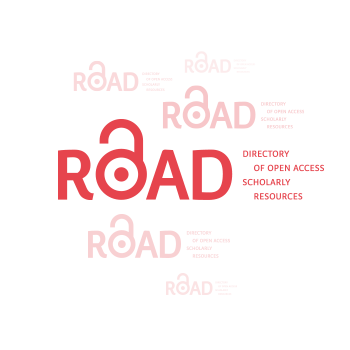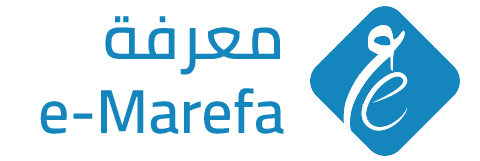آليات التنقل اللغوي في جائحة COVID-19: الابتكار المعجمي والثراء
DOI:
https://doi.org/10.59994/pau.2022.1.144الكلمات المفتاحية:
تغيّر اللغة وتطوّرها، علم النصوص الكبيرة، علم تحليل النصوص الناقد، جائحة كوفيد-19، لغة كوروناالملخص
هدفت الدراسة للتعرف على آليات الحراك اللغوي في جائحة كوفيد-19، وبالتالي فهي تُحقّق في اللغة التي ابتكرها وطوّرها الناطقون الأصليون للغة الإنجليزية خلال الأزمة العالمية المستمرة. كما هدفت الدراسة إلى تحديد هذه المصطلحات، والعمليات الصرفية التي تُسّهل اشتقاق هذه العبارات، وشرح الأسباب الكامنة وراء اختيارها واستخداماتها. واتبعت الدراسة المنهج النوعي. أمّا فيما يتعلق بجمع البيانات، فقد استفادت الدراسة من علم النصوص الضخمة، لذلك، تم تنفيذ توافق الكلمات الرئيسة في السياق (KWIC) على النصوص الكبيرة في الموسوعة الوطنية البريطانية (BNC) ومواقع معجمية أخرى لبناء مجموعة من لغة كورونا. ومن الناحية التحليلية، استندت الدراسة إلى علم تحليل النصوص الناقد (CDA) على المستوى الدلالي والصرفي والنصّي. وقد توصلت الدراسة إلى أن المصطلحات والعبارات المُستخدمة أثناء الأزمة إمّا أن تكون مُصاغة لإيصال معانٍ مستجدة خلال الجائحة أو تم تعديل مصطلحات مستخدمة مسبقًا لإشباع معاني مُعينة تتعلق بالوباء. كما وجد الباحثون أن العمليات الصرفية المستخدمة تتفاوت بشكلٍ كبير عند الاستخدام، وتنحصر في التركيب والنحت والبناء والصك. وأخيراً، وجد الباحثون أن المجالات الاجتماعية التي تستخدم فيها المصطلحات المرتبطة بلغة كورونا ترتبط بالأُسرة والتعليم والصحة وعلم النفس وعلم الاجتماع والأعمال والسياسة والدين.
التنزيلات
المراجع
Abu-Akel, A., & Bailey, A. L. (2001). Indexical and symbolic referencing: what role do they play in children's success on theory of mind tasks?. Cognition, 80(3), 263-281.
Al-Balushi, B., & Essa, M. M. (2020). The impact of COVID-19 on children− parent’s perspective. International Journal of Nutrition, Pharmacology, Neurological Diseases, 10(3), 164-165.
Alison, L., Alison, E., Noone, G., Elntib, S., Waring, S., & Christiansen, P. (2014). Whatever you say, say nothing: Individual differences in counter interrogation tactics amongst a field sample of right wing, AQ inspired and paramilitary terrorists. Personality and individual differences, 68, 170-175.
BenSaïda, A., & Litimi, H. (2021). Financial contagion across G10 stock markets: A study during major crises. International Journal of Finance & Economics, 26(3), 4798-4821.
Borden, J., Zhang, X. A., & Hwang, J. (2020). Improving automated crisis detection via an improved understanding of crisis language: Linguistic categories in social media crises. Journal of Contingencies and Crisis Management, 28(3), 281-290.
Boberg, S., Quandt, T., Schatto-Eckrodt, T., & Frischlich, L. (2020). Pandemic populism: Facebook pages of alternative news media and the corona crisis--A computational content analysis. arXiv preprint arXiv:2004.02566. 1, 1-201
Breiseth, L. (2020). School responses to COVID-19: ELL/immigrant considerations. Colorín Colorado.
Cobb, S. D. (2007). A shadow underneath: The secret history of paranoia, borders and terrorism in postwar American literature and film. The University of Arizona, USA.
Deshpande, G., & Schuller, B. (2020). An overview on audio, signal, speech, & language processing for COVID-19. arXiv preprint arXiv:2005.08579.
Fromkin, V., Rodman, R., & Hyams, N. (2018). An Introduction to Language (w/MLA9E Updates). Cengage Learning.
Gleitman, L., & Papafragou, A. (2005). Language and thought. Cambridge University Press.
Gorbalenya, A. E., Baker, S. C., Baric, R. S., de Groot, R. J., Drosten, C., Gulyaeva, A. A., ... & Ziebuhr, J. (2020). Severe acute respiratory syndrome-related coronavirus: The species and its viruses–a statement of the Coronavirus Study Group. BioRxiv.
Hoff, E. (2013). Language development. Cengage Learning.
Hoff, E. (2006). How social contexts support and shape language development. Developmental review, 26(1), 55-88.
Holmes, J. (2013). An introduction to sociolinguistics. Routledge.
Holmes, J. (2013). An introduction to sociolinguistics. Routledge.
Jackman, H. (1998). Convention and language. Synthese, 117, 295-312.
Kimmelman, V. (2015). Information structure in Russian sign language and sign language of the Netherlands:(University of Amsterdam, 2014). Sign Language & Linguistics, 18(1), 142-150.
Kim, Y. G., Moon, H., Kim, S. Y., Lee, Y. H., Jeong, D. W., Kim, K., ... & Lee, S. H. (2019). Inevitable isolation and the change of stress markers in hemodialysis patients during the 2015 MERS-CoV outbreak in Korea. Scientific reports, 9(1), 1-10
Kitishat, A. R., Al Omar, K. H., & Al Momani, M. A. K. (2020). The Covid-19 crisis and distance learning: E-teaching of language between reality and challenges. Asian ESP Journal, 16(51), 316-326.
Malecki, K. M., Keating, J. A., & Safdar, N. (2021). Crisis communication and public perception of COVID-19 risk in the era of social media. Clinical Infectious Diseases, 72(4), 697-702.
Marques, A. C. (2019). Displaying gender: transgender People's strategies in everyday life. Symbolic Interaction, 42(2), 202-228.
Murphy, M. P. (2020). COVID-19 and emergency eLearning: Consequences of the securitization of higher education for post-pandemic pedagogy. Contemporary Security Policy, 41(3), 492-505.
Oyebode, O., Ndulue, C., Mulchandani, D., Suruliraj, B., Adib, A., Orji, F. A., ... & Orji, R. (2022). COVID-19 pandemic: Identifying key issues using social media and natural language processing. Journal of Healthcare Informatics Research, 6(2), 174-207.
Pennebaker, J. W., & Lay, T. C. (2002). Language use and personality during crises: Analyses of Mayor Rudolph Giuliani's press conferences. Journal of Research in Personality, 36(3), 271-282.
Rashed, S. K., Ahmed, R., Frid, J., & Aits, S. (2020). English dictionaries, gold and silver standard corpora for biomedical natural language processing related to SARS-CoV-2 and COVID-19. arXiv preprint arXiv:2003.09865.
Schmitt, N. (Ed.). (2013). An introduction to applied linguistics. Routledge.
Schuller, B. W., Schuller, D. M., Qian, K., Liu, J., Zheng, H., & Li, X. (2021). Covid-19 and computer audition: An overview on what speech & sound analysis could contribute in the sars-cov-2 corona crisis. Frontiers in digital health, 3, 564906.
Singh, J., & Singh, J. (2020). COVID-19 and its impact on society. Electronic Research Journal of Social Sciences and Humanities, 2(1), 168-172.
Thorne, T. (2020). CORONASPEAK–the language of Covid-19 goes viral. Language and innovation, 93-105.
Wang, Z. (2021). Addressing migrants’ well-being during COVID-19: An analysis of Chinese communities’ heritage language schools in Germany. Migration Studies, 9(3), 1144-1165.
Wargadinata, W., Maimunah, I., Febriani, S. R., & Humaira, L. (2020). Mediated Arabic language learning for higher education in COVID-19 situation. Izdihar: Journal of Arabic Language Teaching, Linguistics, and Literature, 3(1), 59-78.
Wolfer, S., Koplenig, A., Michaelis, F., & Müller-Spitzer, C. (2020). Tracking, exploring and analyzing recent developments in German-language online press in the face of the coronavirus crisis: cOWIDplus Analysis and cOWIDplus Viewer. arXiv preprint arXiv:2005.13316.
Zou, C., Zhao, W., & Siau, K. (2020). COVID-19 pandemic: A usability study on platforms to support eLearning. In HCI International 2020–Late Breaking Posters: 22nd International Conference, HCII 2020, Copenhagen, Denmark, July 19–24, 2020, Proceedings, Part II 22 (pp. 333-340). Springer International Publishing.

التنزيلات
منشور
كيفية الاقتباس
إصدار
القسم
الرخصة
الحقوق الفكرية (c) 2023 مجلة جامعة فلسطين الأهلية للبحوث والدراسات

هذا العمل مرخص بموجب Creative Commons Attribution 4.0 International License.
مجلة جامعة فلسطين الاهلية للبحوث والدراسات تعتمد رخصة نَسب المُصنَّف 4.0 دولي (CC BY 4.0)











